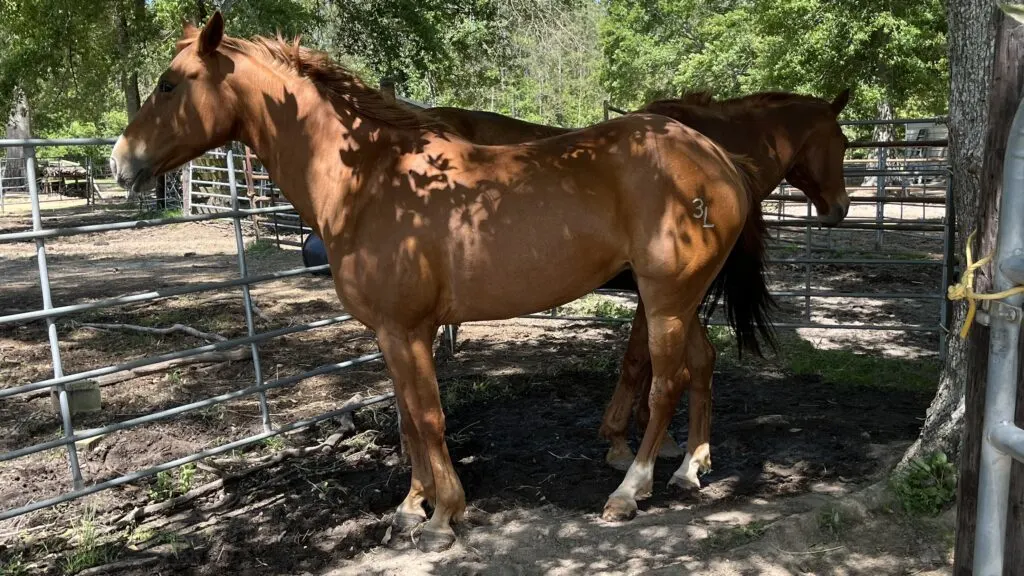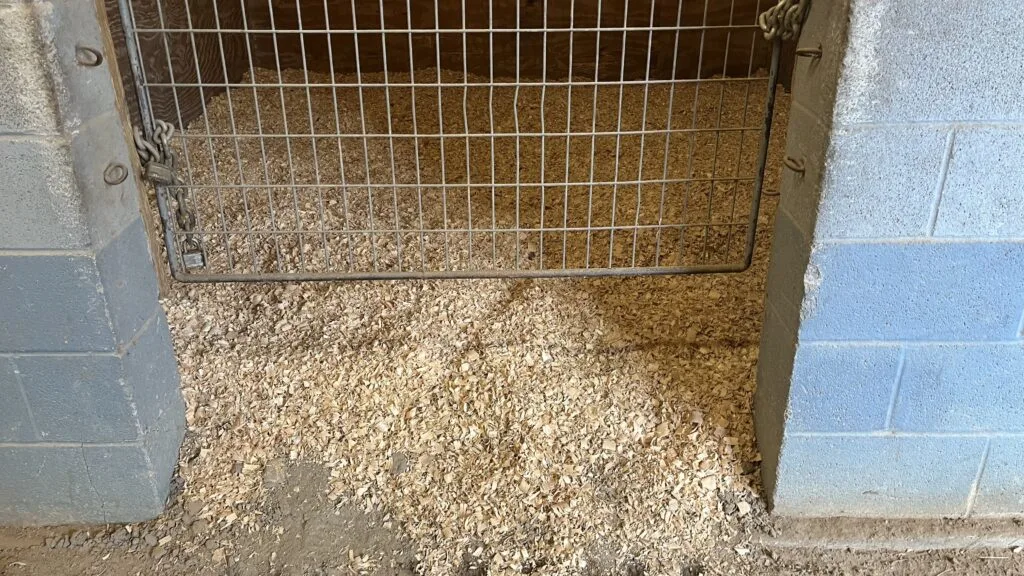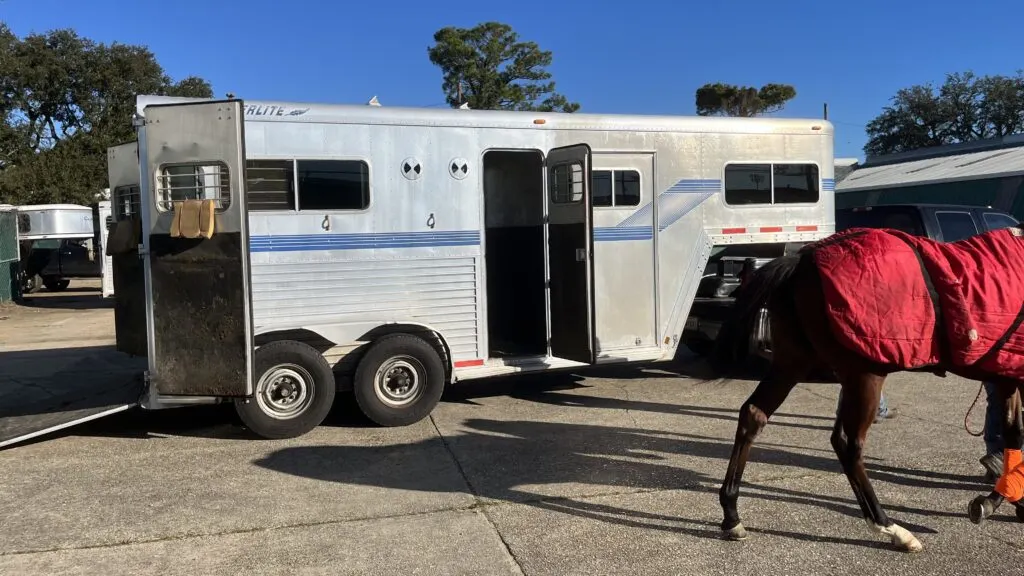Published on: May 14, 2023
When my granddaughter got her first horse, I knew the dedication, responsibility, and deep understanding that horse ownership requires. My own experience has taught me the importance of being prepared and having the right equipment on hand. So, we set out to compile a list of essentials that she would need for her new companion.
Navigating this journey together, we discovered the vast array of necessary items, from grooming tools to riding gear. The list was extensive, but each item played a crucial role in horse care. We realized that this endeavor was more than just a shopping trip; it was a valuable lesson in responsibility and commitment for my granddaughter.
If you’re venturing into horse ownership like we did, you might feel overwhelmed by the task ahead. But don’t worry; I’ve got you covered. Stay with me as I share our comprehensive checklist of essentials. Not only will it equip you for this journey, but it’ll also deepen your understanding of what it truly means to own and care for a horse.
Understanding Your Horse’s Needs

A horse, like any living creature, has basic needs that must be met to ensure its health and well-being. These needs primarily include food, water, and shelter.
When it comes to food, horses require a diet rich in fiber, which is typically obtained through good-quality forage such as hay or grass. They also need access to clean, fresh water at all times. The quantity of food and water a horse requires can vary depending on factors like its size, age, activity level, and climate.
Shelter is another crucial need for horses. This doesn’t necessarily mean a fancy stable; a simple three-sided shelter can provide ample protection from the elements in many climates. The key is to offer a safe space where the horse can escape from harsh weather like wind, rain, or extreme heat.
Understanding these needs is just the first step. The right equipment can significantly aid in fulfilling them. For instance, proper feed bins and water troughs ensure the horse’s food and water stay clean and uncontaminated. Similarly, a well-built and maintained shelter can provide comfort and safety for your horse in all types of weather.
By addressing these basic needs through appropriate equipment and care, you lay the foundation for your horse’s health and happiness. It’s a commitment, but one that comes with immeasurable rewards.

Essential Horse Care Equipment
Proper horse care involves a range of tools designed to keep your horse healthy, clean, and comfortable. Here’s a rundown of some of the key equipment you’ll need:
Grooming Tools: Grooming is an essential part of horse care. It helps maintain a clean coat, stimulates blood flow, and offers an opportunity to check for injuries or abnormalities. Basic grooming tools include:
- Brushes: A curry comb for removing loose hair and dirt, a stiff-bristled brush (dandy brush) for removing heavy dirt, and a soft-bristled brush (body brush) for finishing.
- Hoof Pick: This tool is used to clean the horse’s hooves, which is crucial for preventing hoof diseases.
- Mane and Tail Comb: To keep your horse’s mane and tail tangle-free.
Feeding and Watering Tools: Proper feeding and watering equipment is essential for ensuring your horse’s nutritional needs are met.
- Buckets: Sturdy buckets are required for both feeding and watering. It’s important to use buckets that can be easily cleaned to maintain hygiene.
- Hay Nets or Racks: These tools are used to hold hay off the ground, reducing waste and ensuring your horse’s feed stays clean.
Remember, the quality of these tools is essential. Cheap tools may break easily or even injure your horse, so it’s worth investing in durable equipment that will stand the test of time.

Horse Riding Gear
Riding gear is another critical aspect of horse ownership. This not only includes equipment for the horse but also safety gear for the rider. In terms of riding and handling equipment, here’s what you’ll need:
- Saddles: The saddle is designed to provide a secure and comfortable seat for the rider. It’s essential to find a saddle that fits both the rider and the horse to ensure comfort and safety during the ride.
- Bridles: A bridle holds the bit in the horse’s mouth and allows the rider to guide and control the horse. The bridle includes the headstall, bit, and reins, each of which plays a critical role in communicating with your horse.
- Halters and Lead Ropes: A halter fits over the horse’s head and is used for leading or tethering the horse. The lead rope attaches to the halter and is used to guide, tie, or tether the horse when not riding.
- Saddle Pads: A saddle pad or blanket goes under the saddle to provide extra cushioning and protect the horse’s back from friction and pressure.
- Riding Helmets: Safety should always be a top priority when riding. A well-fitted, safety-standard riding helmet is crucial. It can significantly reduce the risk of serious head injuries in the event of a fall.
- Riding Boots: These provide safety, comfort, and control when riding. They protect the rider’s feet and lower legs, and the heel prevents the foot from sliding through the stirrup.
- Protective Vests: Especially for those involved in jumping or riding in rugged terrain, protective vests can provide an added layer of safety by protecting the rider’s torso.
Remember, each piece of riding gear plays a significant role in ensuring a safe and enjoyable ride. Always ensure your gear is in good condition before each ride, and prioritize safety by wearing your helmet and appropriate footwear. Riding with safety in mind allows you to fully enjoy the unique and fulfilling experience of horse ownership.

Horse Shelter and Bedding Supplies
Providing your horse with a comfortable and safe shelter is another crucial aspect of horse ownership. This involves not only the stable itself but also the bedding and maintenance supplies.
Stable Necessities:
- Stall Mats: These provide a soft and comfortable surface for your horse, reducing the amount of bedding needed and making cleaning easier.
- Bedding Material: Bedding, like straw or wood shavings, provides comfort for the horse, absorbs urine, and helps control odors.
- Stall Fans: These can be vital to keeping your horse comfortable, especially in warmer climates. Stall fans help circulate air, reducing heat and discouraging flies. However, installing them safely is important to avoid any potential harm to the horse.
- Stall Equipment: This includes various items like snaps and hooks for hanging buckets or hay nets, tie rings for securing horses safely, and other hardware that aids in the function and safety of the stall.
Maintenance Equipment:
Keeping a horse’s stall clean and functional is crucial to their health and well-being. The right maintenance equipment can make this task easier.
- Manure Forks and Wheelbarrows: These are essential for cleaning stalls and removing manure. Regular cleaning helps maintain a sanitary environment for your horse.
- Water Hoses and Buckets: A good quality water hose is crucial for providing fresh water, washing tack, and bathing horses. Buckets are needed for watering and feeding.
- Broom and Dustpan: A broom is necessary for sweeping the stable aisle and keeping the area tidy.
Remember, a clean and well-maintained stable contributes to a happy and healthy horse. It’s a part of horse ownership that requires ongoing attention, but the benefits are well worth the effort.

Horse Health and Wellness
Ensuring your horse’s health and wellness is a vital part of horse ownership. This involves having the necessary first aid supplies on hand and understanding the importance of preventative health measures.
First Aid Supplies and Health Equipment:
Just like humans, horses can have health emergencies, and having a well-stocked first aid kit is essential. Some key items to include in your horse’s first aid kit are:
- Thermometer: A horse’s normal temperature ranges from 99-101 degrees Fahrenheit. Having a thermometer on hand can help monitor your horse’s health.
- Bandages: These are important for treating wounds or injuries. You’ll need both stable bandages (for protecting wounds or supporting legs in the stable) and elastic adhesive bandages (for securing dressings on wounds).
- Antiseptic Wound Spray: To clean and disinfect cuts and scrapes.
- Hoof Pick: Not only used for grooming, but a hoof pick can also help you check for injuries or lodged objects in the hoof.
Preventative Health Supplies:
Maintaining your horse’s health also involves preventative measures.
- Dewormers: Regular deworming is crucial to maintain your horse’s health. The schedule can depend on your horse’s environment and lifestyle.
- Fly Repellents: Flies can be annoying and even dangerous for horses, as they can transmit diseases. Using fly repellents or fly masks can help keep these pests at bay.
Remember, while these supplies can handle minor health issues or emergencies, always contact a vet for serious injuries or health concerns. Regular vet check-ups are also an important part of horse ownership to ensure your horse stays in good health.

Transportation Equipment
Transporting your horse safely and comfortably is another crucial aspect of horse ownership, whether for shows, vet visits, or trail rides. Here’s what you’ll need:
Trailers and Other Transportation Necessities:
- Horse Trailer: The type of trailer you need will depend on how many horses you plan to transport, the size of your horse, and the distance you’ll be traveling. Two common types are straight-load trailers (which hold one or two horses facing forward) and slant-load trailers (which hold multiple horses at a slant).
- Trailer Ties: These are used to secure your horse in the trailer and prevent them from moving around excessively during transport.
- Ramp or Step-Up: Depending on your horse and trailer, you might need a ramp for easier loading and unloading, or a step-up may be sufficient.
Safety Considerations for Transporting Your Horse:
- Training: Before hitting the road, make sure your horse is comfortable with the trailer. This might involve some training and plenty of patience.
- Driving: Drive carefully and smoothly to make the ride as comfortable as possible for your horse. Avoid sudden stops or turns.
- Ventilation: Ensure the trailer is well-ventilated and that your horse has access to water during longer trips.
- Regular Checks: During long journeys, stop regularly to check on your horse and offer breaks.
Remember, the key to safe and stress-free travel is preparation. Ensure your equipment is in good condition, and take the time to familiarize your horse with the trailer before embarking on your journey.
Investing in Quality Equipment
Choosing quality equipment for your horse is an investment that pays off in the long run. Not only does it ensure durability, but more importantly, it promotes safety for both you and your horse.
The Importance of Quality Equipment:
Quality equipment is typically more durable and reliable. It won’t wear out or break easily, meaning you won’t have to replace it as frequently. More importantly, high-quality equipment ensures the safety of your horse. For instance, a well-made saddle won’t break or cause discomfort during a ride, and a sturdy halter won’t snap when you’re leading your horse.
Tips on Buying Horse Equipment:
- Research: Before making any purchase, do your research. Understand what you need and why you need it. Read product reviews and consult with other horse owners or professionals.
- Shop Around: Check different stores and online platforms. Prices can vary significantly, and you might find better deals if you take the time to look.
- New vs. Used: While new equipment can be pricey, used equipment can be a good option if you’re on a budget. Just ensure it’s in good condition and safe to use.
- Ask for Advice: Don’t hesitate to ask for advice. Your vet, fellow horse owners, or a trusted horse supply store can provide valuable insights.
Remember, while price is a consideration, it shouldn’t be the only factor in your decision. Quality, safety, and suitability for your horse’s needs are equally, if not more, important. After all, investing in quality equipment contributes to a more rewarding and safer horse ownership experience.
Here is a good YouTube video that covers what you need for your first horse.
Conclusion-First Horse 101
Stepping into the world of horse ownership is a thrilling adventure filled with moments of joy and learning. From understanding your horse’s basic needs to selecting the right equipment, each aspect plays a vital role in ensuring the health, comfort, and safety of your equine friend.
Remember, while it might seem overwhelming at first, the key is to take one step at a time and seek advice when needed. Don’t hesitate to consult professionals, fellow horse owners, or reliable online resources.
Investing in quality equipment not only promises durability but also ensures safety, making it worth every penny. Each piece of equipment, whether it’s for grooming, riding, or transportation, holds its significance and contributes to a rewarding horse ownership experience.
Finally, remember that the bond between you and your horse is the most beautiful part of this journey. With the right equipment and a heart full of love, you’re well on your way to creating countless cherished memories with your new companion. Happy horse owning!
Meet Miles Henry
An avid equestrian and seasoned racehorse owner, Miles Henry brings his extensive experience to the equine world, proudly associating with the AQHA, The Jockey Club, and various other equine organizations. Beyond the racetrack, Miles is an accomplished author, having published various books about horses, and is a recognized authority in the field, with his work cited in multiple publications.
🔗 Connect with Miles:
Twitter
Facebook
YouTube: Check out race highlights, horse care tips, and more!

